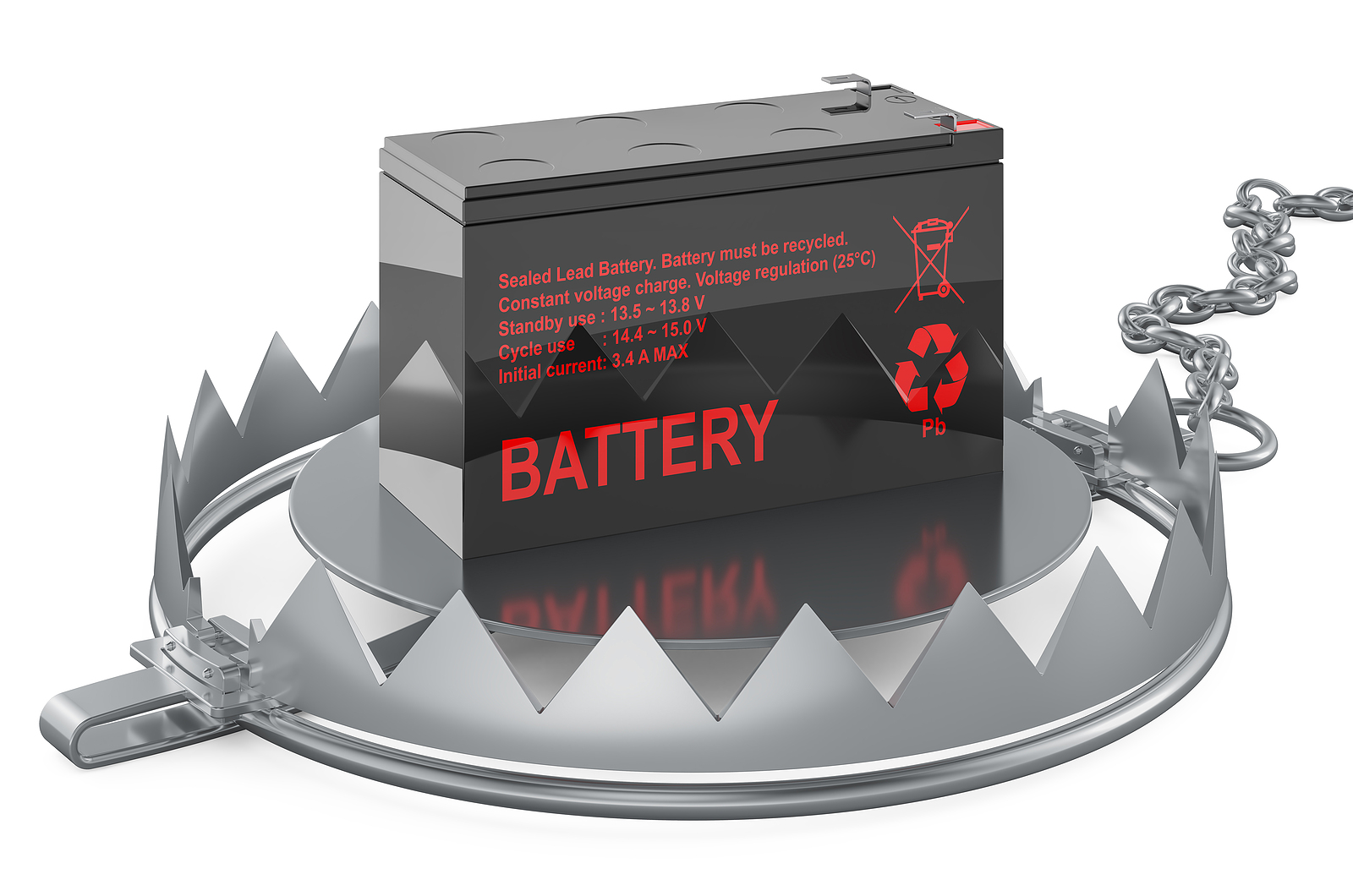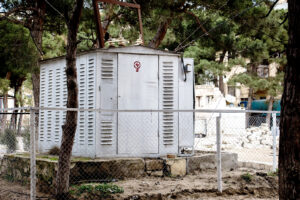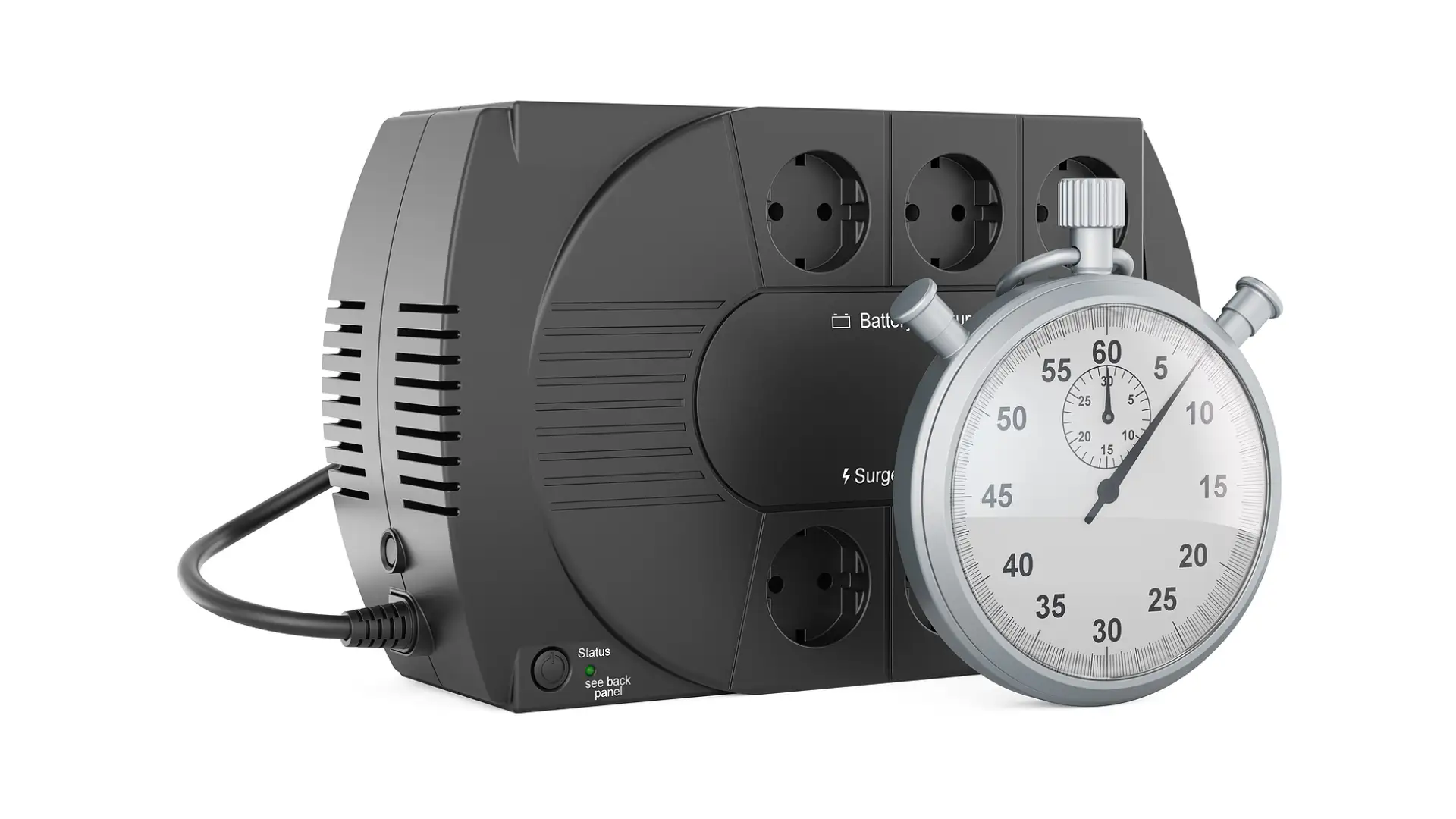
Are Uninterruptible Power Supplies Dangerous
Living in our technology-driven era, where our daily lives are intricately intertwined with various gadgets and devices, the impact of power interruptions can't be underestimated. It's here that Uninterruptible Power Supplies (UPS) steps in as a dependable savior, ensuring our devices stay operational even amidst outages.
But, as with any technological solution, the question of safety naturally arises. Delving into this query, let's embark on a comprehensive journey to uncover the realm of UPS safety. We'll not only unwrap their functionality and potential hazards but also arm you with crucial safety insights, empowering you to navigate the UPS landscape with confidence and wisdom.
Understanding Uninterruptible Power Supplies (UPS)
What is a UPS and How Does it Work?
An Uninterruptible Power Supply (UPS) serves as a crucial electrical apparatus meticulously crafted to furnish momentary power sustenance to interconnected devices precisely during instances when the primary power supply encounters a disruption.
Essentially, the UPS assumes the role of an intermediary that effectively links the primary power source and the contingent devices it upholds. This multifaceted UPS system fundamentally encompasses a triad of pivotal constituents, each playing a distinct role in its holistic functionality:
- Battery: Positioned at the core of the UPS, the battery emerges as the nucleus of its operation. Throughout the operational span of the primary power supply, the battery undergoes a recharging process. However, in the event of a power outage, the UPS seamlessly transitions to harness the stored energy within the battery, thus ensuring an uninterrupted and persistent supply of electrical energy to the connected devices.
- Inverter: Functioning as a pivotal component, the inverter assumes the crucial responsibility of converting direct current (DC) power, sourced from the battery, into alternating current (AC) power, which resonates with the requisite format for device consumption. By orchestrating this meticulous conversion, the inverter obviates any jarring disruptions, facilitating a smooth and imperceptible shift between power sources.
- Rectifier/Charger: The rectifier, during periods of the primary power's functionality, undertakes the intricate task of converting AC power to DC power. This converted DC power is subsequently employed to invigorate the battery, replenishing its energy reserves. Notably, the rectifier's role extends beyond mere charging—it diligently oversees the well-being of the battery, optimizing its health and readiness to be called upon during exigencies, such as power blackouts.
Types of Uninterruptible Power Supplies

Uninterruptible Power Supply (UPS) systems are not uniform solutions, but rather encompass a range of distinct types meticulously designed to cater to diverse requirements:
- Offline/Standby UPS: This category of UPS serves as an elementary safeguard against power irregularities. Operating in a standby mode, it swiftly switches to battery power when a disturbance is detected in the main power supply. Despite its fundamental nature, this UPS type plays a vital role in shielding devices from abrupt power fluctuations and brief outages.
- Line-Interactive UPS: Going beyond the fundamental protection offered by offline UPS systems, the line-interactive UPS introduces an added layer of sophistication. It incorporates a mechanism for regulating voltage variances in addition to its outage mitigation capabilities. By automatically adjusting voltage levels to counteract under-voltage or over-voltage conditions, this UPS variant safeguards connected equipment from potential harm caused by inconsistent power supply.
- Online/Double-Conversion UPS: Positioned at the zenith of UPS technology, the online or double-conversion UPS exemplifies the pinnacle of power protection. Its operational methodology involves a perpetual conversion process where incoming AC power is promptly transformed into DC power, which in turn gets reconverted into AC power that fuels connected devices. This unceasing conversion ensures an uninterrupted and pristine power stream, completely isolating connected equipment from any anomalies in the main power source. While this UPS type demands higher energy consumption due to its continuous conversion process, its unparalleled safeguarding capability makes it indispensable for mission-critical applications where even the slightest disruption could yield catastrophic consequences.
The Potential Risks Associated with UPS
Delving into the realm of Uninterruptible Power Supply (UPS) systems unveils a spectrum of potential hazards that warrant meticulous attention from users. These perils, while not undermining the inherent safety features ingrained within UPS designs, necessitate an informed awareness. Among the array of apprehensions, two salient concerns emerge: fire hazards and electrical hazards. To foster a comprehensive comprehension of these risks, an in-depth exploration is imperative.
Fire Hazards
Intrinsically designed to uphold safety, UPS systems paradoxically harbor the latent risk of fire outbreaks, primarily attributable to the presence of batteries within their structure. These batteries, pivotal for energy storage, entail an intricate interplay of chemical reactions. A malfunction or damage within the battery matrix can culminate in an alarming escalation of temperature, engendering overheating, and in the gravest scenarios, instigating a fire conflagration.
To counterbalance this formidable risk and cultivate a secure operational environment, an amalgamation of pragmatic safety measures is indispensable:
- Meticulous Procurement: Undertake a judicious selection process by investing exclusively in UPS systems hailing from reputable manufacturers renowned for their steadfast commitment to quality benchmarks and uncompromising safety protocols.
- Optimal Ventilation: Intricately linked to fire hazard mitigation is the strategic positioning of the UPS system, ascertaining its unrestricted access to adequate ventilation channels. The dissipation of generated heat is thereby facilitated, preemptively averting the peril of thermal escalation.
- Periodic Vigilance: A regimen of periodic surveillance is incumbent upon users. Regularly subject the UPS system to comprehensive inspections, meticulously scanning for any perceptible cues hinting at damage or potential battery leakage, which might inadvertently provide the spark to a potential conflagration.
Electrical Hazards
The symphony of electricity, while orchestrating the foundation of UPS systems, is inherently accompanied by a symphony of potential electrical hazards. The amalgamation of intricate components, including wiring and circuits, might inadvertently metamorphose into sources of peril if not scrupulously managed.
- Expert Installation: The pivot upon which electrical hazard mitigation revolves is the aspect of installation. Engage the services of a certified electrician equipped with an astute comprehension of the nuanced requisites underpinning UPS systems. A professional installation mitigates the risks associated with erroneous wiring, circuit connections, and load distribution.
- Ongoing Maintenance: A continuum of vigilant oversight constitutes the bedrock of electric hazard mitigation. Regularly inspect the UPS system, sifting through its intricate components to promptly identify and rectify potential anomalies. This proactive approach precludes the manifestation of hazards, encompassing electric shocks, short circuits, or the inadvertent destruction of interconnected devices.
Safety Measures for Using UPS Systems
Delving into the intricacies of Uninterruptible Power Supply (UPS) systems reveals a matrix of safety considerations, each meticulously engineered to safeguard users and optimize system performance. This comprehensive overview unearths the multifaceted aspects of safety encompassing proper placement, load management, and the critical sphere of routine testing and maintenance.
Proper Placement
The pivotal decision of where to position your UPS system extends beyond mere convenience, encompassing a strategic choice that can indelibly influence both safety and operational efficacy. Imposing an amalgamation of meticulous guidelines elevates the safety quotient:
- Optimal Environmental Conditions: The foundation of safety begins with the environment in which the UPS system is situated. Opt for a cool and dry locale, effectively circumventing the menacing specter of overheating and damp-induced complications that can impair both functionality and longevity.
- Vigilant Ventilation: Transcending environmental considerations, and guaranteeing proper ventilation is imperative. An effectively ventilated area ensures the efficient dispersion of the heat generated by the UPS system, mitigating thermal concerns and augmenting the system's overall operational stability.
Load Management
Prudent load management crystallizes as an indispensable facet in nurturing both safety and efficiency within the ambit of UPS operation:
- Avert Overloading: Vigilantly refrain from connecting devices that surpass the designated capacity of the UPS system. Overloading poses a twin risk of precipitating overheating and potential hazards, thereby necessitating a judicious allocation of electrical load.
- Hierarchical Device Prioritization: The strategic prioritization of connected devices during an outage manifests as a critical safety measure. Ensuring that essential devices are given precedence in receiving power from the UPS bolsters operational continuity during exigent scenarios.
Regular Testing and Maintenance
The heartbeat of a well-maintained UPS system pulsates through the realm of routine testing and maintenance, circumventing potential issues before they metamorphose into catastrophic disruptions:
- Battery Evaluation: Imbued within the sphere of maintenance, a steadfast regimen of battery testing is pivotal. Periodically scrutinize the battery's capacity, and if the need arises, promptly embark on a replacement course to avert potential malfunctions and operational hindrances.
- Functional Trials: Intermittently replicate scenarios of power outages to subject the UPS system to rigorous functional tests. These simulated instances shed light on the seamless transition to battery power, validating the system's readiness to circumvent operational disruptions when confronted with actual power fluctuations.
Choosing the Right UPS for Your Needs and Factors to Consider
When embarking on the journey of selecting the ideal Uninterruptible Power Supply (UPS) to match your precise needs, it becomes imperative to navigate through a landscape of factors, ensuring not only safety but also seamless functionality:
Power Capacity Deliberation
The cornerstone of your UPS selection lies in comprehending the power demands of the devices it will fortify. This necessitates a meticulous evaluation of both wattage requirements and the desired runtime during potential outages. By scrutinizing these intricacies, you ensure that the chosen UPS possesses the requisite muscle to adeptly manage your equipment's power necessities, uninterrupted.
Exploring Diverse Topologies
The realm of UPS systems unveils an assortment of topologies, each meticulously designed to proffer distinctive levels of protection and efficiency. Delving into this realm, you will encounter standby, line-interactive, and double-conversion UPS alternatives.
The pivotal choice among these topologies shapes the degree of fortification your devices will encounter against power anomalies, while also influencing energy efficiency considerations.
Analyzing Outlet Configuration and Connectivity
Embark on an astute analysis of your devices' ensemble, unraveling the precise number and configuration of outlets indispensable for their operation. This process ensures that your selected UPS accommodates the diverse array of plug types and power requirements inherent in your devices. Moreover, in an era underpinned by digital interconnectivity, it's prudent to explore UPS units that extend network connectivity for remote oversight and administration, further amplifying your control over power management.
Deciphering Battery Variants
The heart of any UPS, the battery, introduces yet another layer of complexity into the decision-making mosaic. Batteries traverse two primary categories: sealed lead-acid (SLA) and lithium-ion. In the process of making your choice, embark on an odyssey that entails evaluating facets such as lifespan, upkeep intricacies, and environmental impact.
By doing so, you strike a balance between a battery's endurance and the practicalities surrounding its maintenance, all while contemplating its broader ecological footprint.
Real-World Applications of UPS Systems
The utility of Uninterruptible Power Supply (UPS) systems transcends conventional computer-centric scenarios, finding a myriad of applications across various domains, underscoring their indispensable role:
Healthcare Guardianship
In the realm of healthcare, the significance of UPS systems materializes as a cornerstone for patient well-being. Vital medical equipment, intricately woven into the fabric of patient care, is utterly reliant on a ceaseless power supply. From life-sustaining devices like ventilators to diagnostic tools such as MRI machines, the uninterrupted operation of these instruments is non-negotiable. UPS systems ensure that even in the face of power disruptions, the continuity of medical procedures remains unblemished, safeguarding patients' lives and health outcomes.
Telecommunications Lifeline
The omnipresence of modern communication networks hinges upon uninterrupted power availability. Cellular towers, essential conduits of connectivity in the digital age, stand as poignant exemplars of the significance of UPS systems in the telecommunications arena. These towers, scattered across urban landscapes and remote locales alike, necessitate constant power to ensure the seamless flow of data and voice communication. The reliability of cell towers, buttressed by UPS systems, serves as the bedrock of interconnected societies.
Retail Resilience
Within the bustling milieu of retail, where transactions transpire at a rapid clip and security is paramount, the role of UPS systems emerges with distinct clarity. Point-of-sale (POS) systems, responsible for processing transactions and maintaining business operations, are fortified by UPS units to weather power interruptions. Additionally, security apparatuses such as surveillance cameras and alarm systems are endowed with uninterrupted power, ensuring the vigilance and safety of retail spaces even in the face of unforeseen outages.
The Future of UPS Systems
In response to the rapid advancement of technology and the changing landscape of power management, UPS (Uninterruptible Power Supply) systems are undergoing significant transformations that encompass intricate innovations:
Emergence of Smart-UPS
The trajectory of UPS systems is marked by the integration of cutting-edge Internet of Things (IoT) capabilities, ushering in an era of unparalleled efficiency and control. These Smart UPS units are designed to seamlessly interface with IoT networks, enabling administrators to remotely monitor, manage, and optimize UPS performance in real-time.
This integration grants a holistic view of power status, battery health, and energy consumption, allowing for swift proactive responses to any anomalies.
Integration of Renewables
A pivotal leap towards sustainability is evident as UPS systems intermingle with renewable energy sources, most notably solar power. By synergizing the capacities of UPS and solar power technologies, the landscape of backup power solutions is being revolutionized.
This synergy not only enhances the resilience of critical systems during power outages but also aligns with eco-friendly practices, contributing to reduced carbon footprints. This novel approach further diversifies energy sources, culminating in a comprehensive energy ecosystem that intertwines conventional power grids, battery storage, and renewable generation.
Conclusion
Uninterruptible Power Supplies (UPS) are invaluable tools for maintaining continuity during power outages, but they come with certain risks that users must be aware of. By understanding how UPS systems work, being mindful of potential hazards, and following proper safety measures, users can maximize the benefits of UPS systems while minimizing the risks associated with their use.
In answering the question “Are uninterruptible power supplies dangerous?” it's clear that while there are risks involved, these can be managed effectively through responsible usage and maintenance. Investing in high-quality UPS systems, proper installation, and regular upkeep can contribute to a safe and uninterrupted power supply for your devices.
Sources
continue reading
Related Posts
Uninterruptable Power Supplies In today's world, where technology keeps us […]
Uninterruptible Power Supply For Laptop In today's fast-paced digital world, […]
Small Uninterruptible Power Supply In today's digital age, where connectivity […]



